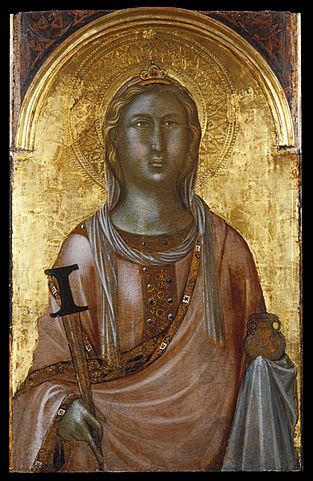Category: Home
Saint LucySaint Lucy

Lucia of Syracuse (283–304), also called Saint Lucia (Latin:Sancta Lucia) or Saint Lucy, was a Christian martyr who died during the Diocletianic Persecution. She is venerated as a saint in the Roman Catholic, Anglican, Lutheran, and Eastern Orthodox churches. She is one of eight women (including Saint Mary) explicitly commemorated by Roman Catholics in the Canon of the Mass. Her traditional feast day, known in Europe as Saint Lucy’s Day, is observed by Western Christians on 13 December. Lucia of Syracuse was honored in the Middle Ages and remained a well known saint in early modern England.
Feast of the Immaculate ConceptionFeast of the Immaculate Conception
The Solemnity of the Immaculate Conception, also called Immaculate Conception Day, celebrates the sinless lifespan and Immaculate Conception of the Blessed Virgin Mary on 8 December, nine months before the feast of the Nativity of Mary, celebrated on 8 September. It is one of the most important Marian feasts in the liturgical calendar of the Roman Catholic Church celebrated worldwide.
By Pontifical decree, it is the patronal feast day of Argentina, Brazil, Chile, Italy, Korea, Nicaragua, Paraguay, the Philippines, Spain, the United States, and Uruguay. By royal decree, it is designated as the day honoring the patroness of Portugal. It is celebrated by the Roman Catholic Church and some select Protestant Christian denominations.
Since 1953, the Pope visits the Column of the Immaculate Conception in the Piazza di Spagna to offer expiatory prayers commemorating the solemn event.
The feast was first solemnized as a Holy day of obligation on 6 December 1708 under the Papal Bull Commissi Nobis Divinitus by Pope Clement XI and is often celebrated with Catholic Mass, parades, fireworks, processions, food, and cultural festivities in honour of the Blessed Virgin Mary and is generally considered a Family Day, especially in many pious Catholic countries.
Saint AmbroseSaint Ambrose

Aurelius Ambrosius (Italian: Sant’Ambrogio [ˌsantamˈbrɔːdʒo]; Lombard: Sant’Ambroeus [ˌsãtãˈbrøːs]), better known in English as Saint Ambrose (/ˈæmbroʊz/; c. 340 – 4 April 397), was a bishop of Milan who became one of the most influential ecclesiastical figures of the 4th century. He was the Roman governor of Liguria and Emilia, headquartered in Milan, before being made bishop of Milan by popular acclamation in 374. Ambrose was a staunch opponent of Arianism, and has been accused of fostering persecutions of Arians, Jews, and pagans.
Traditionally, Ambrose is credited with promoting “antiphonal chant”, a style of chanting in which one side of the choir responds alternately to the other, as well as with composing Veni redemptor gentium, an Advent hymn.
Ambrose was one of the four original Doctors of the Church, and is the patron saint of Milan. He is notable for his influence on Augustine of Hippo.
